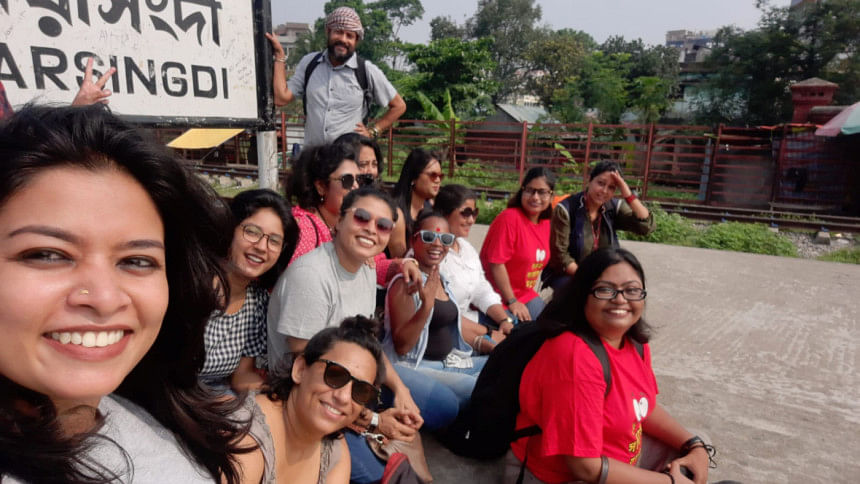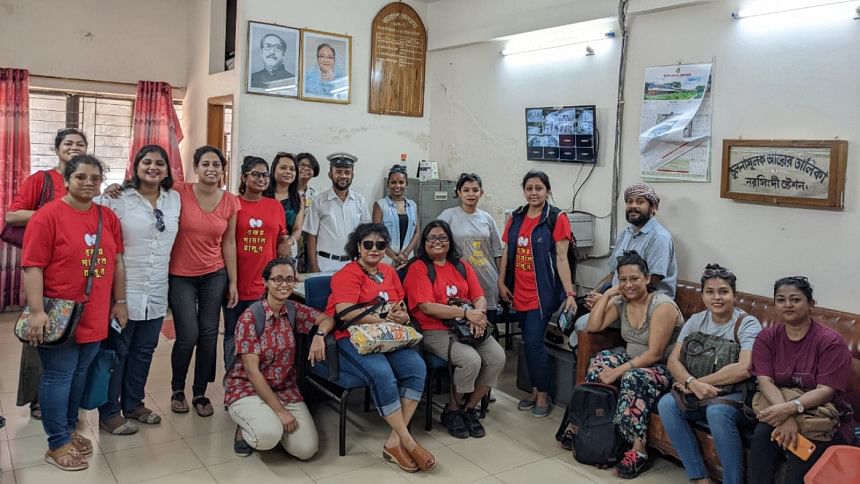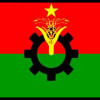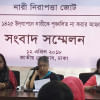Revisiting the Narsingdi assault

18 May, 2022. A young woman at the Narsingdi station, intending to make her way to Dhaka to sit for an exam, faced a derogatory remark pertaining to her attire. The spiteful comment was made by another middle-aged woman also present at the station. Soon, the heated debate between the two was joined by a group of men and quickly turned into a physical assault. The young woman and her group of friends quickly sought refuge in the station master's room where a call was placed to 999 to report the episode. A video of the incident went viral on Social Media and sparked anger and criticism among netizens. Trishia Nashtaran, a feminist organiser and foresight Strategist, could not sit idle and let the shameful occurrence pass by without doing something about it.
Please talk about your organisation and what it does.
The name of my organisation is OGNIE Foundation Bangladesh. I am the founding president here. OGNIE is an acronym for Organizing Gender Narratives for Inclusivity and Equity, which I think is self-explanatory. OGNIE is a non-profit working for a gender-inclusive future through storytelling and design thinking across physical and digital spaces in Bangladesh. The organization sprouted from my activism and research with Meye Network, a feminist grassroots organizing platform I started in 2011, as a response to gender discrimination in the workplace. Meye Network has been evolving organically through the solidarity, leadership, and entrepreneurship of Bangla-speaking women over the last eleven years, expanding its horizon to other forms of marginalisation intersecting with gender. While Meye Network gathers voices organically, OGNIE aims to create gender-focused knowledge and services to create meaningful impact. I initiated the recent visit to Narsingdi Rail Station as a volunteer of Meye Network, following its human-centric method of holding space. It was more of an independent call to action rather than an organisational decision. The scope of the event transcended the boundaries of organisations, welcoming everyone who had courage and empathy, irrespective of their gender and formal identities.

How did you find so many like-minded women to go into the Narsingdi station and how did you arrange the logistics? Was it organised on FB groups or through some other medium?
It was 22 May when I decided to visit Narsingdi Rail Station by myself. It had already been four days since a woman was assaulted apparently for her attire there. Everyone was writing on social media, suggesting actions to be taken, but no one had visited the crime spot. That is why I decided to go there by myself if no one else goes. I shared my intention on my timeline on Facebook, on some of the online groups of Meye Network, and on some other feminist platforms that I knew. I asked women to send me a personal message if they wanted to join me in the cause. I deliberately did not invite or request anyone to accompany me. Because I only wanted those who would make an effort to be a part of the change. I planned the trip with only those who reached out to me via message. These individuals were activists, writers, researchers, artists, designers, filmmakers, photographers, theatre personnel, development practitioners, engineers, educators, and many more. They were on this journey in their own right. We shared a sense of accountability that made the process smooth. The logistics were not too complicated, since we resonated from the beginning. My role was just to facilitate our collective calling. I arranged for the tickets from Dhaka to Narsingdi and coordinated the time and expenses. The rest happened organically.
What was the thought process behind this? Did you feel that there is strength in numbers and that the more women raise their voices against internalised misogyny, the safer the country will be for women?
We went to Narsingdi for the woman who was assaulted on 18 May. We wanted to be visibly there for her. Our goal was to reclaim our right to freedom of our bodies and clothes in a public place in a non-violent way. Numbers were not my concern in the beginning. But yes, the number does matter, especially when it represents solidarity. But I do not think solidarity is enough to unlearn internalised misogyny. It would take years of conscious actions and cultural shifts to change the patriarchal perspective that lies at the core of misogyny. Besides, numbers can play a vital role in actuating mob mentality, which was the case that led to the hostile incident on 18 May. Therefore, I would not rely on numbers too much. I would rather focus on qualitative change, even if it is with a small group of people with the right mindset.
How fruitful did you think the protest organised by you was? Is this a one-off protest or will you be continuing this thought and carrying it forward in other ways?
I do not seek instant results, and I believe no one should. Change takes time and patience. Our collective presence at Narsingdi Rail Station was one of the many organic non-violent protests we have participated individually or organised from Meye Network over the years. A group of twenty people in not-so-conservative attire, peacefully interacting with the environment matters for sure. I would call that a passive intervention, rather than seeing that as a result. My final goal is an inclusive society where everyone has the right to practice their freedom safely and respectfully. I do not think we are there yet. I hope the people who observed us and interacted with us at the station would go back home with some questions and new thoughts, many of which might not be in our favour. I am still glad that we could raise questions and hold the authority accountable for the safety of the citizens. This is the least we could do.
What do you think about this age-old debate that women should dress in a certain way while men can have complete freedom over their attire? Do you think women should be forced to observe purdah or pushed to go for a more liberal dressing?
Patriarchy has always considered it its duty to control women's bodies by telling them where to go and what to wear. Women's dress is an age-old debate because patriarchy is always there. But do men have complete freedom over their attire? Can a man wear a sari, nose pin, or nail polish in public without facing hostility in Bangladesh? I don't think so. Patriarchy defines the boundary of gender identity and dictates who should wear what. It is a global reality for all genders. I believe everyone must have the freedom to decide what to wear irrespective of their gender, and freedom cannot be forced. I believe we need to uproot the patriarchy and reform the broken systems around us for a safe and inclusive future.

 For all latest news, follow The Daily Star's Google News channel.
For all latest news, follow The Daily Star's Google News channel. 








Comments